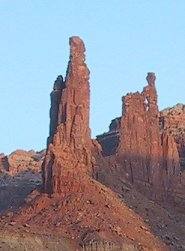JPEG compression and the impact on the quality of photos
|
|
Hi folks, |
|
|
There is a little more information at this discussion link: |
|
|
Thanks John. Brad is basically saying he uses trial & error to get the desired effect as far as colors, but my problem has been with edge distortion. |
|
|
I've seen this happen with my photos too. Technically, I think the problem is not with JPEG compression per se, but occurs mostly because the photo is resized. This requires resampling the image and then when it is compressed back into JPEG you can get edge artifacts like in your example, depending on the program doing it. If you resize a photo and then save it, and reopen, five times, it will look bad even using Photoshop. A lot of places recommend you save a photo in jpeg as few times as possible when you are working on it (ideally once as the last step). |
|
|
Welcome to the frequency domain!. What you are seeing is commonly called ringing or mosquito noise and is a common artifact in image compression based on the DCT (Discrete cosine transform). You can credit it to this chappy who had it all worked out long ago: en.wikipedia.org/wiki/Gibbs… |
|
|
I've bumped our JPEG save quality up a tad, so the pictures should look a little better. |
|
|
Thanks, Andy. |
|
|
People may get grumpy about this, but ALL images are resaved once - even if not resized. |
|
|
Andy Laakmann wrote:People may get grumpy about this, but ALL images are resaved once - even if not resized.Andy, thanks for clarifying this and also about not sharpening the images. I don't know what kind of nasty stuff you are talking about, but I read about how the jpg format allows for a thumbnail image to be embedded and does not necessarily get updated if the image is edited (e.g., cropped). This woman journalist posted a picture of herself working on her PC sans clothing. She cropped the image to be provocative, but not too revealing. However, the thumbnail (to her later embarrassment) was the original, uncropped image that bared all. Granted it was only a thumbnail, but she (and most people) had no idea about the embedded thumbnail feature of the jpg format. Ken |
|
|
JPG compression uses truncation matrices as part of the algorithm. You don't get to change the elements of those matrices when you specify quality. You just get to specify (indirectly) a number that those matrices will be multiplied by. If a picture is compressed, uncompressed and then recompressed using the same matrices you generally won't notice much difference. However if the recompression uses matrices that don't have the same frequency balance as the original compression, you could have what amounts to a destructive interference between the two. So the MP recompression could be more destructive to some photos than others. Set your quality factor to the highest possible number that still makes it under the 5 meg guideline. That is the only thing you can do unless MP stops recompression. Uncompressed TIF would be better if MP removed the 5 meg limit. Then they could compress ONCE. |
|
|
This is partially the reason I started |

 Continue with onX Maps
Continue with onX Maps Continue with Facebook
Continue with Facebook





















